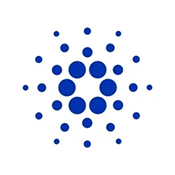When comparing Sandbox and Cardano, we're essentially looking at two distinct worlds within the blockchain universe: one rooted in immersive digital environments and user-generated content, and the other in scalable, sustainable infrastructure for decentralized applications. While both platforms leverage blockchain technology, their core missions, architectures, and user bases differ significantly. Understanding these differences is crucial for enthusiasts and investors seeking to align their interests with the right ecosystem. In this comparison, we'll explore their technological foundations, scalability solutions, use cases, and future prospects to help you make an informed decision.
Short on time? Jump to Sandbox vs Cardano Comparison
Understanding Sandbox and Cardano ?
Sandbox is a virtual world platform built on blockchain technology, emphasizing gaming, user-generated content, and digital asset ownership. Its voxel-based design allows creators to craft intricate 3D environments and assets, which can be monetized as NFTs. The platform employs Layer 2 solutions to enhance scalability and reduce transaction costs, making it suitable for a vibrant community of gamers and developers.
In contrast, Cardano is a highly scalable and environmentally sustainable blockchain platform designed to host decentralized applications and smart contracts. Its layered architecture separates transaction processing from smart contract execution, facilitating upgrades and security. Cardano's proof-of-stake consensus mechanism, Ouroboros, ensures energy efficiency and decentralization, appealing to enterprise-level applications and a broad range of use cases.
Both platforms have distinct technological innovations—Sandbox with its voxel modeling tools and interoperability focus, and Cardano with its formal methods, layered design, and proof-of-stake protocol. These differences directly influence their scalability, security, and the types of applications they support, shaping their respective ecosystems.
As blockchain technology continues to evolve, understanding how Sandbox’s immersive, user-centric environment compares with Cardano’s robust, enterprise-ready infrastructure offers valuable insights into potential investment and development opportunities within the decentralized space.
Key Differences Between Sandbox and Cardano
Primary Use Case
- Sandbox: Sandbox is primarily designed for virtual worlds, gaming, and digital asset ownership through NFTs. Its focus is on enabling users to create, own, and monetize interactive 3D environments, fostering a community-driven ecosystem centered around creativity and entertainment.
- Cardano: Cardano aims to provide a scalable, secure, and sustainable blockchain infrastructure for decentralized applications, smart contracts, and enterprise solutions. Its goal is to facilitate a wide range of use cases from DeFi to supply chain management, emphasizing formal verification and academic rigor.
Architectural Design
- Sandbox: Sandbox employs a voxel-based architecture integrated with Layer 2 solutions, enabling high scalability and interoperability for user-generated assets across different virtual experiences. Its decentralized network supports ownership and monetization of digital assets via NFTs.
- Cardano: Cardano features a layered architecture with separate Settlement and Computation layers. This design enhances scalability, security, and upgradeability, supporting complex smart contracts written in multiple programming languages while maintaining high throughput and energy efficiency.
Consensus Mechanism
- Sandbox: Sandbox leverages blockchain technology with Layer 2 scalability solutions, relying on an underlying proof-of-stake system to secure transactions and ownership rights of digital assets.
- Cardano: Cardano utilizes Ouroboros, a proof-of-stake consensus protocol that is energy-efficient, secure, and supports over 1,000 transactions per second, ensuring decentralization through thousands of stake pools.
Scalability Solutions
- Sandbox: Sandbox enhances scalability through Layer 2 protocols, reducing transaction costs and increasing throughput, which is vital for high-frequency gaming and asset trading environments.
- Cardano: Cardano's scalability is achieved through its layered architecture and off-chain sidechains, allowing it to handle millions of transactions while maintaining security and decentralization.
Community and Ecosystem
- Sandbox: Sandbox's community revolves around gamers, content creators, and NFT enthusiasts engaging in creating and monetizing immersive experiences, supported by tools like VoxEdit and Game Maker.
- Cardano: Cardano's ecosystem is composed of developers, academic researchers, and enterprise partners focusing on building scalable dApps, DeFi platforms, and institutional applications, bolstered by a strong academic foundation and strategic partnerships.
Sandbox vs Cardano Comparison
| Feature | ✅ Sandbox | ✅ Cardano |
|---|---|---|
| Main Focus | Virtual worlds, gaming, NFTs | Scalable blockchain infrastructure, smart contracts |
| Architecture | Voxel-based + Layer 2 | Layered (Settlement & Computation) |
| Consensus Protocol | Underlying blockchain tech, Layer 2 | Ouroboros proof-of-stake |
| Transaction Speed | Optimized via Layer 2 solutions | Over 1,000 TPS with sidechains |
| Target Audience | Gamers, digital asset creators | Developers, enterprises, DeFi users |
| Development Tools | VoxEdit, Game Maker | Plutus, Marlowe, IELE virtual machine |
Ideal For
Choose Sandbox: Gamers, NFT collectors, content creators seeking immersive experiences and monetization opportunities.
Choose Cardano: Developers and enterprises aiming for scalable, secure blockchain solutions for diverse applications.
Conclusion: Sandbox vs Cardano
Sandbox and Cardano exemplify different strategic directions within the blockchain ecosystem. Sandbox excels in creating engaging virtual worlds where creativity and digital ownership converge, supported by innovative voxel technology and Layer 2 scalability. Conversely, Cardano prioritizes building a sustainable, secure, and flexible platform capable of supporting complex decentralized applications across industries, thanks to its layered architecture and formal development methods.
Choosing between these platforms depends on your specific interests—whether you're drawn to immersive gaming and NFT ecosystems or require a robust infrastructure for enterprise-grade dApps. Both are poised for growth, driven by their unique strengths and visions for the future of decentralized technology. As the blockchain space matures, platforms like Sandbox and Cardano will continue to evolve, shaping the next chapter of digital innovation, each catering to distinct yet overlapping communities of users and developers.






